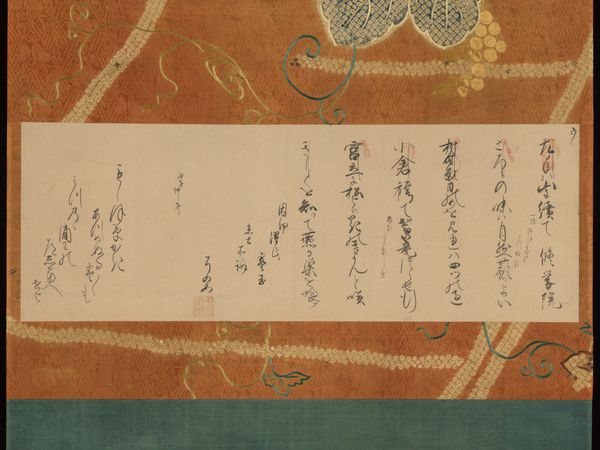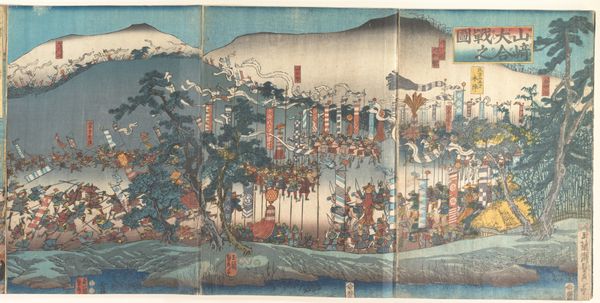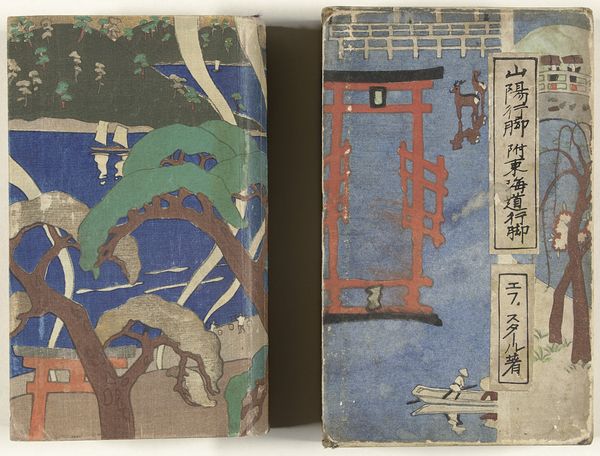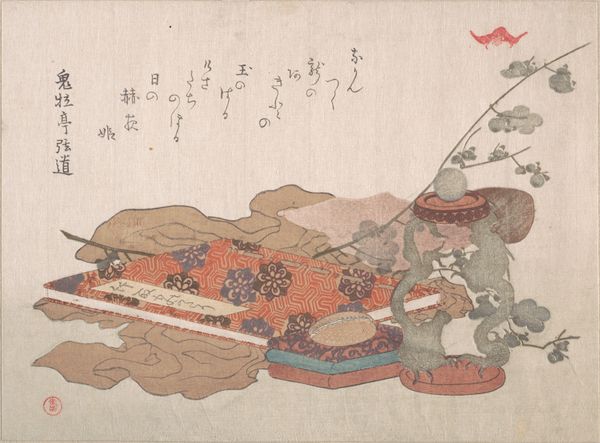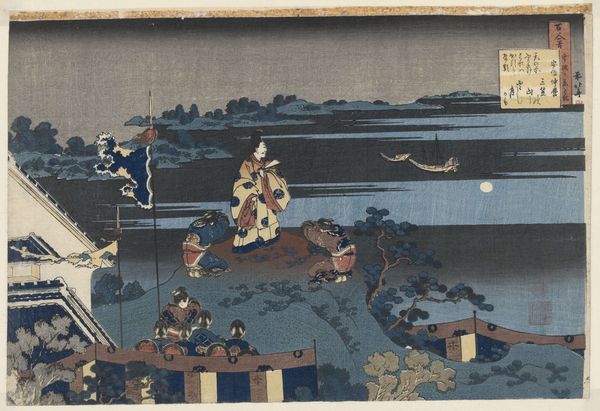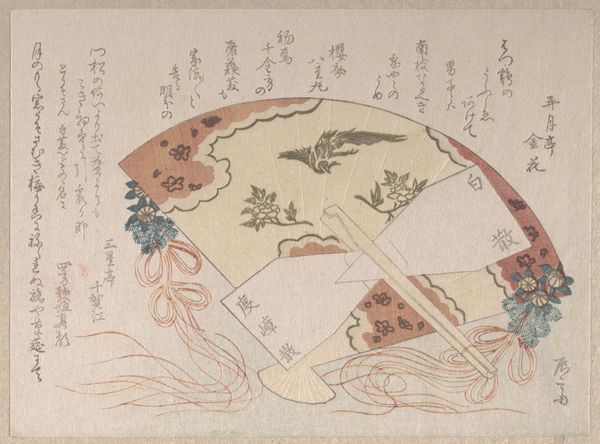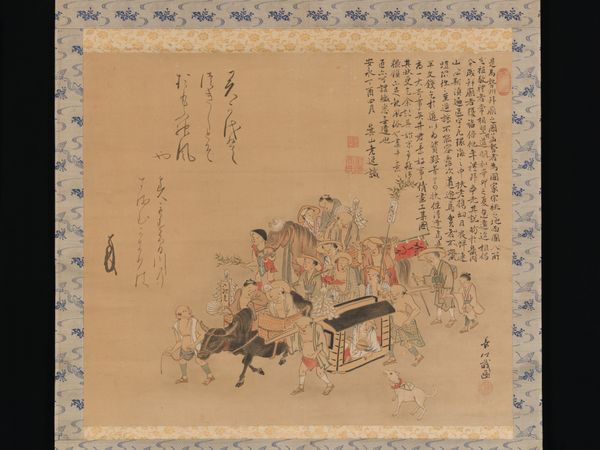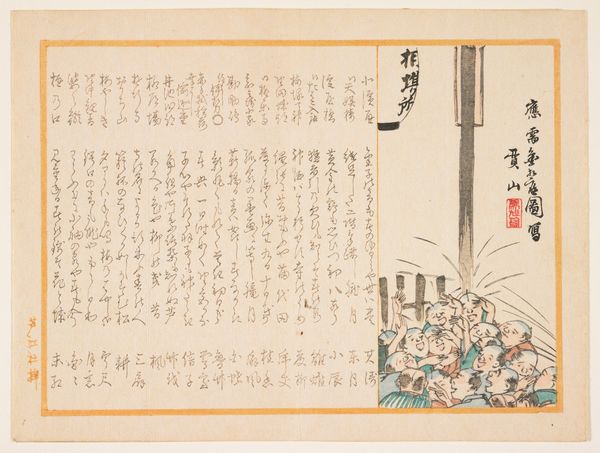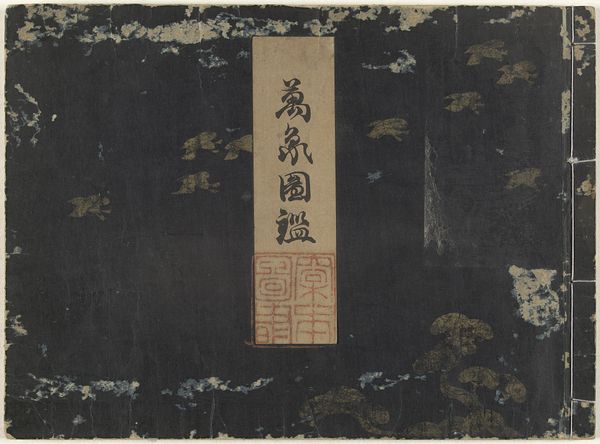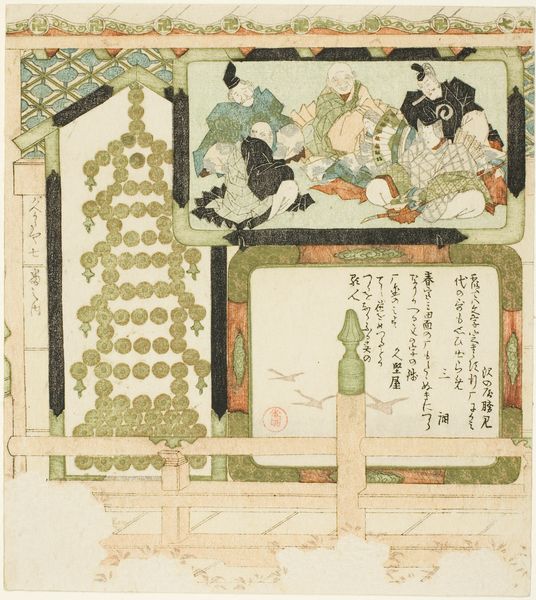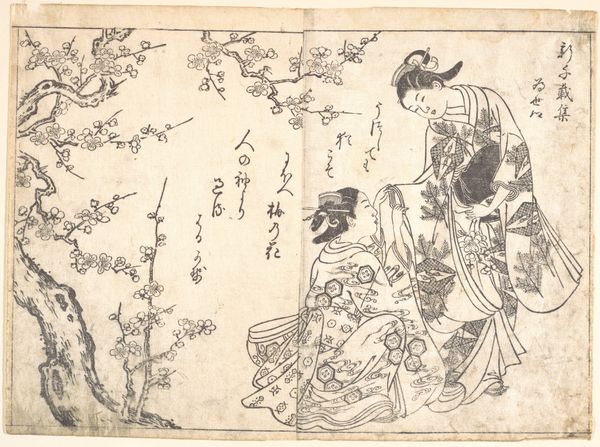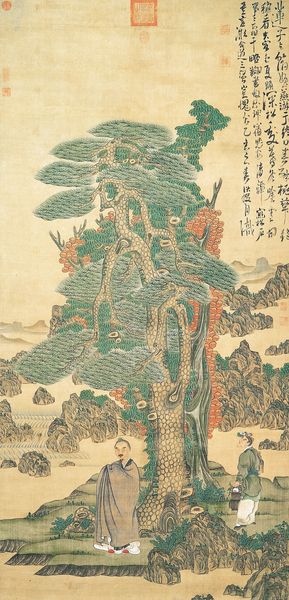
The -Butterflies- Chapter of the Tale of Genji c. 17th century
0:00
0:00
painting, watercolor
#
water colours
#
narrative-art
#
painting
#
asian-art
#
watercolor
#
miniature
#
yamato-e
#
calligraphy
Dimensions: 48 1/2 x 25 1/4 in. (123.19 x 64.14 cm) (outer frame)9 1/2 x 16 5/8 in. (24.13 x 42.23 cm) (canvas)
Copyright: Public Domain
Curator: This is an illustration of "The -Butterflies- Chapter of the Tale of Genji," created around the 17th century by Tosa Mitsuyoshi. It’s currently held at the Minneapolis Institute of Art. Editor: It's split, almost a diptych, but unsettling. The left side teems with vibrant, carefully rendered figures and architecture, set against a stylized landscape in watercolors. But the right side, shrouded in dark ink and script, creates a strong contrast. Curator: Indeed. The dichotomy highlights two essential elements of Yamato-e painting. The left side exemplifies "tsukuri-e," or "made-up pictures," known for opaque pigments and detailed narrative scenes. It portrays the opulence of court life with emphasis on meticulous technique. Editor: And I assume the right? What about the materiality and use of the paper for calligraphy purposes? It looks different, like washi perhaps, which dictates a completely different approach to applying the pigment. How does this division shape its consumption? Curator: You are astute in recognizing this contrast in medium! It features expressive calligraphy, employing a more direct relationship between author, material and patron reflecting a shift in cultural production in 17th-century Japanese art, highlighting distinct aesthetic preferences during that time. Editor: It’s like two different artistic economies colliding on the same surface. And note the composition as well—the artist is creating a visual tension here by balancing these competing modes of production Curator: It's more than that. Observe how Mitsuyoshi uses framing and segmentation, echoing Genji’s narrative complexity. Each space provides different points of entry depending on literacy, class, gender, providing a rich interpretation of Heian court life. Editor: That attention to audience engagement and societal context are fascinating. How does Mitsuyoshi then subvert conventional visual norms and reflect, perhaps, cultural shifts within Japanese society? It's hard not to speculate what’s "at stake" in that division, artistically, economically and culturally. Curator: I agree, in “The Butterflies,” we get the chance to delve into gendered spaces and how these might be shifting by understanding the material contrasts as narrative commentary. Editor: Well, that division really allows to interpret a shift from the artist's hand from what feels more ornamental to textual in the act of reception and the consumption of it all. I have an altogether different view of "high art" after this dialogue.
Comments
minneapolisinstituteofart almost 2 years ago
⋮
This pair of album leaves presents a textual passage from and illustrations of the “Butterflies” chapter of The Tale of Genji. The text is written in flowing script on paper decorated with gold and silver. The accompanying illustrations, rendered in brilliant mineral pigments, combine two passages in the chapter: the spring festivities at Genji’s mansion during which fanciful boats transport musicians and noblewomen around the palace lake; and the following morning, when Genji’s most beloved consort sends her young attendants to dance for the empress. The text describes the scene near the close of the day’s events: "The birds resounded bravely amid warblers’ sweet carolings, while here and there upon the lake waterbirds sang their own songs, and the effect of the rapid conclusion was endlessly delightful. How lightly, then, the butterflies flitted about, to flutter into the hedge at last among cascading kerria roses!" —translation after Royall Tyler
Join the conversation
Join millions of artists and users on Artera today and experience the ultimate creative platform.
